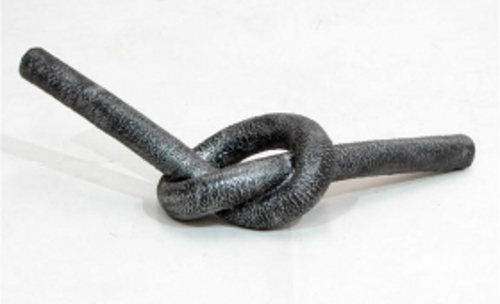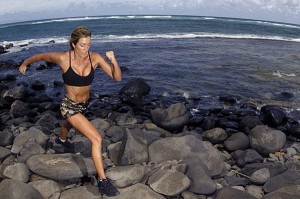 Worried about getting enough iron while you’re pumping iron? If not, maybe you should be. Iron deficiency could be sabotaging your workout, and you may not even know it! If you are looking to increase your muscle mass or training intensity, then it is important to know if iron deficiency is what is holding you back.
Worried about getting enough iron while you’re pumping iron? If not, maybe you should be. Iron deficiency could be sabotaging your workout, and you may not even know it! If you are looking to increase your muscle mass or training intensity, then it is important to know if iron deficiency is what is holding you back.
There is much conflicting information on iron deficiency. There’s so much hype about consuming too much iron that some people are afraid to eat or supplement with it. Cornell University found that those prone to iron deficiency, whether by over training, poor absorption, or other by other means would almost never be at risk of excess iron.
Iron is a trace element that forms the oxygen-transporting molecules that are found in your blood and muscles. Athletes and bodybuilders tend to store less iron and are at higher risk for iron deficiency, which decreases overall performance.
Iron plays a vital role in carrying oxygen throughout the body and removing carbon dioxide from the cells. It is also vital to the proper functioning of over 100 enzymes and co-enzymes in our bodies! Without oxygen, you will lack energy in your workouts, causing a drop in your athletic performance. Bodybuilders, athletes, and extreme fitness enthusiasts are often at high risk for iron deficiency.
Are You At Risk?
 Many times we are struggling with energy or strength and do not think much of it. Iron levels can be determined through losses and dietary intake. Here are some reasons why you might be iron deficient:
Many times we are struggling with energy or strength and do not think much of it. Iron levels can be determined through losses and dietary intake. Here are some reasons why you might be iron deficient:
- The body can lose iron through sweat, blood, and urine. If you do cardio regularly for long amounts of time or are a heavy sweater, you might be at risk.
- “Foot Strike” damage results from pounding your heel during running. This could be because of an extremely hard surface and poor running shoes, as well as poor running form.
- Hard training creates an increase in red blood cells and blood vessel production in the body, which in turn creates a higher demand for iron. Endurance athletes and bodybuilders have a greater iron turnover rate and need more iron.
- Dietary supply is a huge factor when discussing the possibility of iron deficiency. Red meat is a primary source of iron and if you do not eat red meat you must look for alternatives.
Athletes can require up to 30% more iron than non-athletes, but female athletes, distance runners, and vegetarian athletes are at the highest risk for deficiency. Males and postmenopausal women are at the lowest risk.
It is also important to understand that iron depletion occurs in stages. The final stage, and the stage we hear most of, is anemia. Before that, it is called iron deficiency without anemia. It is a good idea to get routine iron screenings if you are in competitions or athletic events, especially those people that are involved in restricted weight classes or minimal body fat. If you want to win your class then now is the time to start taking your nutrition seriously.
Symptoms
 The beginning stages of iron deficiency are hard to pinpoint because the factors can be confused with other issues, like over training. Usually the athlete will notice a decline in energy and performance. Other common symptoms are high exercise heart rate, frequent injury, decrease in endurance, irritability and slight depression.
The beginning stages of iron deficiency are hard to pinpoint because the factors can be confused with other issues, like over training. Usually the athlete will notice a decline in energy and performance. Other common symptoms are high exercise heart rate, frequent injury, decrease in endurance, irritability and slight depression.
If you have more than three of these symptoms and they have persisted even with sufficient rest and other efforts, then it’s a good idea to talk with your physician. Some tests they might perform are a complete blood count (CBC), iron tests, and a ferritin level test, which shows how much iron may be stored in the body.
Because of high exercise durations and workloads, athletes tend to store less iron. Also, bodybuilders that are on restrictive food intakes can be at higher risk because they are not getting enough iron from their diets. This will decrease performance and reduces the work potential of the muscles.
Take a second to think about all the hard work you have put in and realize that it could be severely damaged because of your diet. Diet is one of the best ways to increase your iron stores naturally and not overload the body.
Types of Iron
There are two forms of dietary iron, heme and nonheme. Heme iron is derived from hemoglobin and is found is animal proteins that originally contained this protein of red blood cells. Given this fact, it stands to reason that the foods highest in iron are organ meats.
Nonheme iron is derived from plant sources, such as leafy greens, lentils, and iron-fortified foods. While both are used by the body, nonheme iron is less easily assimilated by the body, so vegetarians may require more total iron to get a sufficient amount absorbed in the gut.
If you’re a vegetarian or a vegan, it is wise to consume your nonheme iron sources with vitamin C to aid in absorption. Also, those with diseases of the digestive tract, such as  Diet is one of the best ways you can increase your iron intake, it’s natural and your body will absorb the amount it needs. There are two ways to measure iron, the recommended daily allowance (RDA) and the tolerable upper intake level (UL).
Diet is one of the best ways you can increase your iron intake, it’s natural and your body will absorb the amount it needs. There are two ways to measure iron, the recommended daily allowance (RDA) and the tolerable upper intake level (UL).
For men age 18 and older, the RDA is 8 mg. This should be relatively easy to achieve, considering that 3 oz of beef has about 3 mg of iron with a UL of 45 mg per day. This is not to suggest that you should eat foods containing this much iron, but it is wise to keep track of your iron simply to ensure that you’re not exceeding those levels continually.
For women, it’s a bit more complicated. For pre-meopausal adult women, the RDA is 18 mg per day, significantly higher than for men. For pregnant women, the RDA is 27 mg due to the needs of the fetus and greater blood volume in the body. For lactating women, look to get 9 mg daily. After menopause, the recommendation drops to 8 mg daily. The UL is 45 mg per day.
Cooking in non-enameled cast iron cookware can help increase the amount of iron you eat, so be sure to use this to your advantage. Some animal sources are lean red meat, chicken and kidney livers, along with tuna, swordfish, and shrimp.
Leafy green vegetables, pumpkin seeds, sunflower seeds, and walnuts are good vegetarian means to adequate intake. Many of our cereals, breads, and other foods are fortified with iron. Be sure to read labels in addition to choosing natural foods that contain iron.
Caffeine can inhibit the absorption of iron, other inhibitors are zinc and calcium. Zinc and calcium’s effects are decreased with the supplements were consumed together with food. That, along with less chance of digestive upset, is why you shouldn’t take iron on an empty stomach.
Keeping Your Body at Peak Performance
If you think you may be low on iron and need to supplement, be sure to consult your healthcare provider. He or she can check your levels through simple blood tests and recommend a supplement if necessary. It is not wise to supplement without blood tests, especially if you already take a multivitamin containing iron due to the potential for iron toxicity.
Even though iron is a trace element and only found in small amounts throughout the body, it has a critical role in your body’s ability to function properly. Now that you understand iron’s role in the body you can prevent the ill effects of iron deficiency from inhibiting your performance.
Nutrition plays such a critical role in muscle building and performance. If you are serious about your goals, then start focusing on what you are eating. Iron plays a key role in improving your muscular strength, endurance and definition.
